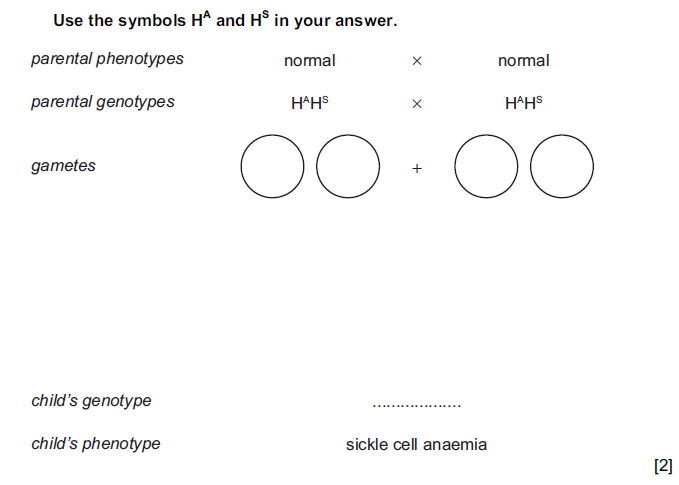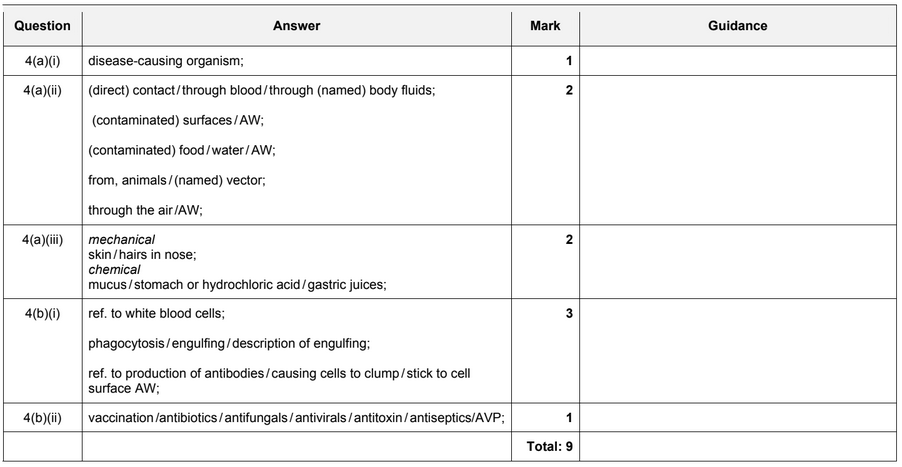Question
(a) Sickle cell anemia is a genetic disorder that is found among people in certain parts of
the world.
A sample of blood was taken from a person with sickle cell anemia and examined with
an electron microscope.
Fig. 4.1 shows some of the red blood cells in the sample.

Explain the problems that may occur as these cells circulate in the blood system.

(b) The gene for hemoglobin exists in two alternative forms:
HA codes for the normal form of hemoglobin;
HS codes for the abnormal form of hemoglobin.
(i) State the name for the alternative forms of a gene.
![]()
(ii) A child has sickle cell anemia. The parents do not have this disorder.
Complete the genetic diagram to show how the child inherited the disorder.

(iii) The parents are about to have another child.
What is the probability that this child will have sickle cell anemia?
![]()
(c) The maps in Fig. 4.2 show the distribution of sickle cell anemia and malaria in some
parts of the world.

(i) Explain why sickle cell anemia is common in people who live in areas where
malaria occurs.

(ii) Suggest why sickle cell anemia is very rare among people who live in Indonesia
and northern Australia.

Answer/Explanation
Ans:


Question
The body has defences against pathogens.
(a) (i) Define the term pathogen.
………………………………………………………………………………………………………………………….
(ii) State two ways a pathogen can be transmitted.
1 ………………………………………………………………………………………………………………………
………………………………………………………………………………………………………………………….
2 ………………………………………………………………………………………………………………………
(iii) The body can defend itself against pathogens.
Complete Table 4.1 by stating examples of the body’s defences.
(b) (i) Blood cells can also defend the body against pathogens.
Outline how they do this.
………………………………………………………………………………………………………………………….
(ii) State one way in which modern medicine can help the body defend itself against
pathogens.
………………………………………………………………………………………………………………………….
Answer/Explanation
Ans: 
